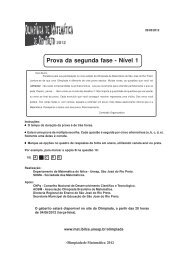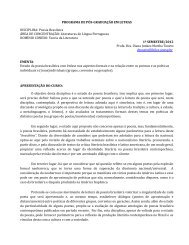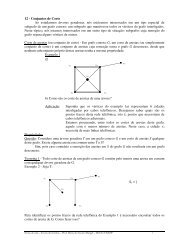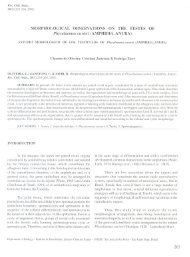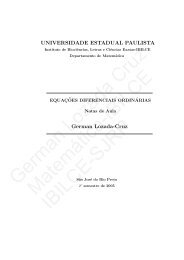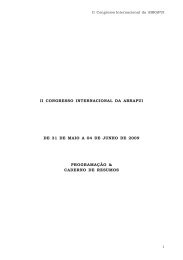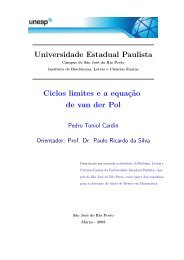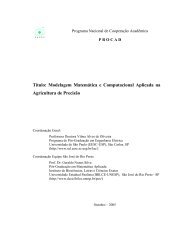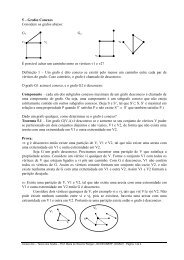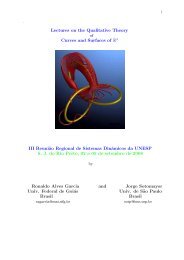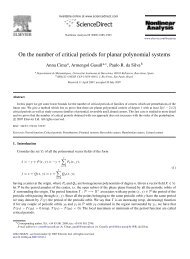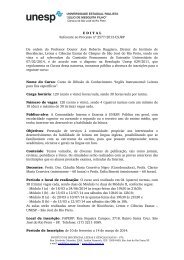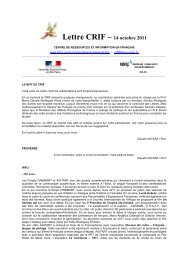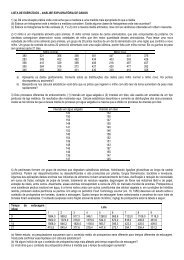Curso de Equações Diferenciais Ordinárias - Unesp
Curso de Equações Diferenciais Ordinárias - Unesp
Curso de Equações Diferenciais Ordinárias - Unesp
Create successful ePaper yourself
Turn your PDF publications into a flip-book with our unique Google optimized e-Paper software.
Dadas duas funções diferenciáveis f, g : I → R e t 0 ∈ I chamamos <strong>de</strong><br />
WRONSKIANO o <strong>de</strong>terminante<br />
W (f, g) (t 0 ) =<br />
∣ f (t 0) g (t 0 )<br />
f ′ (t 0 ) g ′ (t 0 ) ∣<br />
Teorema (ABEL): Sejam y 1 e y 2 soluções <strong>de</strong><br />
y ′′ + p (t) y ′ + q (t) y = 0<br />
on<strong>de</strong> p, q são funções contínuas em I ⊂ R. Temos:<br />
a) Existe c ∈ R tal que<br />
ou<br />
b)<br />
W (y 1 , y 2 ) (t) = ce − R p(t)dt .<br />
W (y 1 , y 2 ) (t) ≠ 0, ∀t ∈ I<br />
W (y 1 , y 2 ) (t) = 0, ∀t ∈ I.<br />
Prova:<br />
Como y 1 e y 2 são soluções da EDO temos<br />
y 1 ′′ + p (t) y 1 ′ + q (t) y 1 = 0<br />
y 2 ′′ + p (t) y 2 ′ + q (t) y 2 = 0<br />
Multiplicando a primeira equação por (−y 2 ) , a segunda por (y 1 ) e somando<br />
obtemos<br />
(W (y 1 , y 2 ) (t)) ′ + p (t) W (y 1 , y 2 ) (t) = 0.<br />
Assim W (y 1 , y 2 ) (t) é uma solução <strong>de</strong><br />
e portanto existe c ∈ R tal que<br />
y ′ + p (t) y = 0<br />
W (y 1 , y 2 ) (t) = ce − R p(t)dt .<br />
b) É uma consequência direta <strong>de</strong> a).<br />
Teorema:<br />
Consi<strong>de</strong>remos a EDO<br />
y ′′ + p (t) y ′ + q (t) y = 0,<br />
on<strong>de</strong> p, q são funções contínuas em I ⊂ R,e y 1 e y 2 duas soluções. São equivalentes:<br />
43



